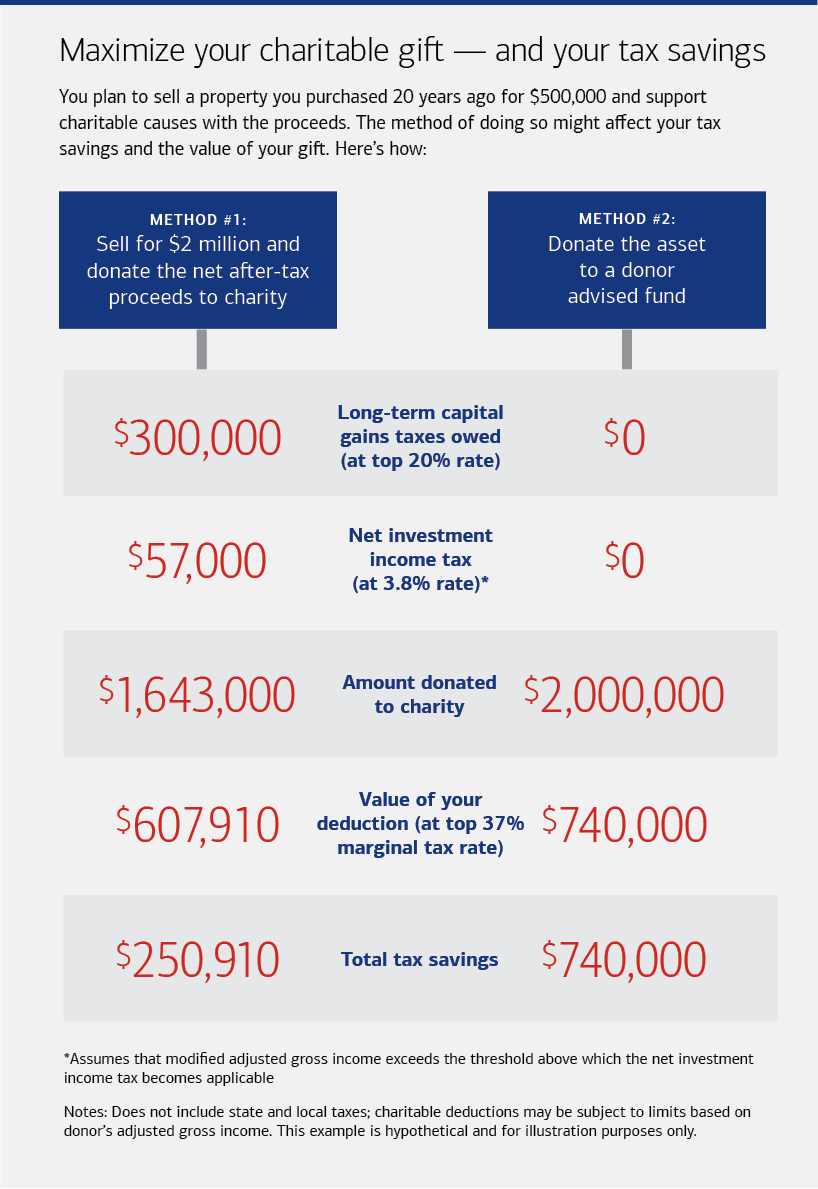With an illiquid asset, a DAF can add even more value by facilitating the sale. “Donor-advised funds help with the path to liquidity,” says Lawson. The process starts with due diligence to ensure the integrity of the assets and absence of any liabilities. “For example, if someone wants to contribute real estate, you want to find out if there’s an environmental issue whose remediation might cost more than the gift’s value,” says Lawson. In addition, the fund confirms there’s a market for what you’re donating. Gifts are typically monetized in no longer than a year and often a few months.
The tax advantages, flexibility and capacity to take in many types of assets have helped make DAFs the fastest growing charitable vehicle, with the number of accounts increasing by an average of more than 23% since 2013, according to the National Philanthropic Trust.1 “More and more people are discovering the real benefits DAFs provide,” says Greene. “Once they understand that they are simpler and less costly than other options and can liquidate contributed assets more quickly, they are opting to rely upon them.” Unfortunately, many donors don’t become aware of the benefits of DAFs until after they liquidate an asset and contribute a diminished amount of proceeds. “The benefits of using them for illiquid donations are so compelling that people often say they wish they had known about this option before they sold the asset,” confirms Greene.
Building a legacy from your business
There are particularly profound advantages to business owners who combine charitable giving with the sale of their business. When an owner contributes an interest in their business to a donor-advised fund in advance of signing a binding letter of intent, the tax deduction can help offset the capital gains taxes triggered by the sale of the business. “A client donated a share of the family business that had grown ten times. This donation provided a significant offset to the client’s capital gains exposure once the business was sold, and the full value of the contributed share of the business went into their donor-advised fund with no taxes incurred on that amount,” Greene says. “The donor is now able to grant the assets to the local soup kitchen, the school or the museum down the street.”
The timing is critical, however. Once the owner has signed a binding letter of intent with the buyer, it is too late to pursue a gift of even a portion of the business. “It’s better to start talking early in the process,” Greene says. “Many business owners are so focused on the sale of their business that they miss the window to make the most of the tax deductibility available through a presale contribution. We don’t want you to miss out on what could be a capstone event.”
Emerging illiquid assets
Private companies and real estate are the most common illiquid assets to donate to a DAF, but they’re certainly not the only ones. “As you think about the wide range of assets that can be donated, they all have certain characteristics in common,” says Greene. “They have been held for more than a year, have appreciated in value, and if you sold them in the open market, you’d have to pay capital gains taxes on them.”
As more investors take an interest in cryptocurrencies and nonfungible tokens (NFTs), those digital assets may fit the bill as well. Bank of America, however, does not accept direct donations of cryptocurrencies. Instead, the bank works with DAF industry specialists to process the donation. “The bank can facilitate an introduction for clients and provide a pathway for making these contributions,” adds Greene.
The tax treatment of the donation may be complex: cryptocurrency is considered property for the purposes of a sale or donation, but NFTs might be subject to the kinds of use rules that govern donations of art.2 Therefore, any discussion of whether to donate digital assets should be undertaken in consultation with a tax adviser.
Whatever strategy you settle on for gifting illiquid assets, doing so can have a lasting impact on your legacy. “You can take money that would have gone to taxes,” says Greene, “and create a personal charitable fund to support your giving for the next few years or the rest of your life — and the lives of your children and grandchildren.”



